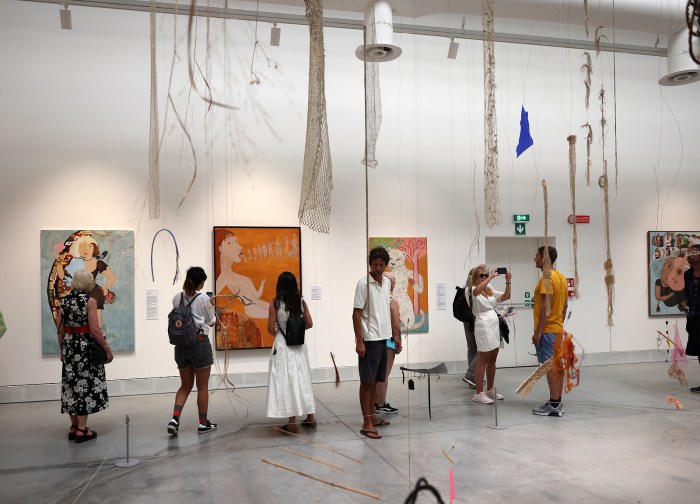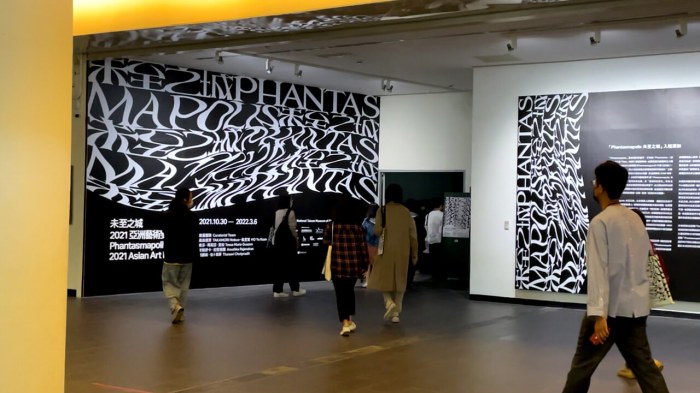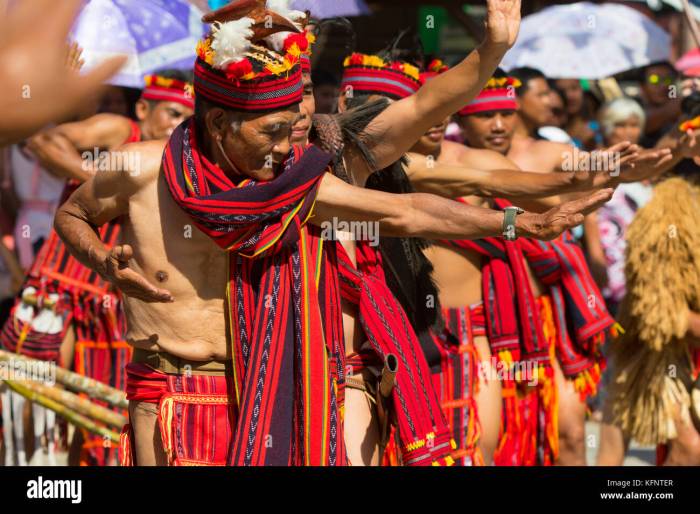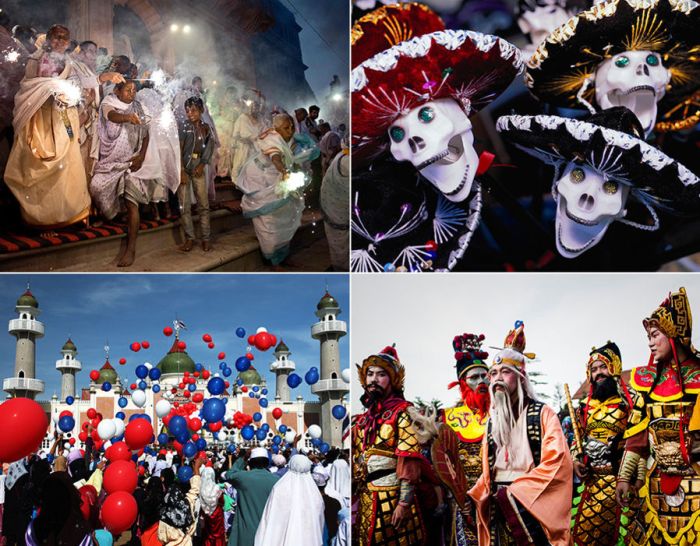
Art Biennales and Global Cultural Exhibits represent a fascinating intersection of art, culture, economics, and tourism. These large-scale events, held periodically in cities around the world, showcase contemporary art while significantly impacting the host city’s economy and social fabric. From their historical evolution to their increasingly sophisticated use of technology, biennales offer a dynamic lens through which to examine global artistic trends and cultural exchange.
This exploration delves into the multifaceted nature of these events, considering their economic impact, social influence, and role in shaping the global art market.
The curatorial approaches employed by different biennales vary widely, reflecting diverse artistic perspectives and cultural contexts. The economic benefits are substantial, attracting significant tourism revenue and stimulating local businesses. However, hosting such events also presents challenges, including logistical complexities and the need for careful community engagement. The integration of technology further enhances the biennale experience, offering innovative ways to present and interact with art.
This analysis will examine these various facets, offering a comprehensive overview of the significance and impact of art biennales in the contemporary world.
Defining Art Biennales and Global Cultural Exhibits

Art biennales and global cultural exhibits are significant platforms for showcasing contemporary art and fostering international cultural exchange. Biennales, recurring international exhibitions of contemporary art, typically occur every two years, while global cultural exhibits encompass a broader range of artistic expressions and cultural presentations, often with a specific theme or focus. Both play crucial roles in shaping artistic discourse and promoting intercultural understanding.
Historical Evolution of Major Art Biennales
The Venice Biennale, founded in 1895, is widely considered the first and most influential art biennale. Initially focused on national pavilions showcasing the art of participating countries, it gradually evolved to include more diverse artistic expressions and curatorial approaches. The São Paulo Biennial, established in 1951, quickly gained prominence, offering a platform for artists from Latin America and beyond, often featuring politically charged and socially conscious works.
Other major biennales, such as the documenta in Kassel, Germany (first held in 1955), took a different approach, focusing on thematic exhibitions that explored broader artistic and societal issues. These early biennales established a model that has been adapted and reinterpreted by numerous subsequent events worldwide, each reflecting the unique cultural context and artistic sensibilities of their host cities.
Curatorial Approaches of Prominent Biennales
The Venice Biennale, while maintaining its national pavilion structure, has seen a shift towards more thematic and curator-driven exhibitions. Recent editions have often presented complex narratives exploring global issues and contemporary artistic practices. In contrast, the São Paulo Biennial has historically embraced a more overtly political and socially engaged approach, often featuring artists who challenge established power structures and address social inequalities.
Documenta, known for its intellectual rigor, has consistently presented ambitious, large-scale exhibitions that delve into specific historical and contemporary themes, often engaging with complex philosophical and political ideas. These differing curatorial approaches highlight the diverse ways in which biennales can function as platforms for artistic experimentation and critical dialogue.
Impact of Global Cultural Exhibits on Artistic Movements and Cultural Exchange
Global cultural exhibits have significantly impacted artistic movements by facilitating cross-cultural dialogue and the exchange of ideas. The exposure to diverse artistic practices and perspectives has fostered new artistic hybridity and experimentation, blurring traditional geographical and stylistic boundaries. For example, the rise of global contemporary art owes much to the increased visibility provided by these exhibits. Furthermore, these exhibits play a crucial role in promoting cultural understanding by creating spaces for intercultural exchange and dialogue.
By showcasing diverse artistic expressions and cultural traditions, they challenge stereotypes and foster greater appreciation for the richness and complexity of human cultures.
Top 5 Most Influential Biennales
The following table highlights five of the most influential biennales, showcasing their unique characteristics.
| City | Country | Focus | Notable Artists |
|---|---|---|---|
| Venice | Italy | International contemporary art, national pavilions, thematic exhibitions | Pablo Picasso, Joseph Beuys, Cindy Sherman, Damien Hirst |
| São Paulo | Brazil | Latin American and international art, social and political engagement | Lygia Clark, Hélio Oiticica, Cildo Meireles |
| Kassel | Germany | Thematic exhibitions exploring art history and contemporary issues | Joseph Beuys, Hans Haacke, Marina Abramović |
| Sydney | Australia | Contemporary art with a focus on Australian and Pacific Rim artists | Sidney Nolan, Imants Tillers, Fiona Hall |
| Biennale of Sharjah | UAE | Contemporary art from the Middle East, Asia, and Africa | Shirin Neshat, Mona Hatoum, Hassan Khan |
Economic and Social Impacts of Art Biennales
Art biennales, while primarily cultural events, exert a significant influence on the economic and social fabric of host cities. Their impact extends beyond the immediate artistic sphere, generating ripple effects across various sectors and fostering community engagement. The economic benefits are substantial, while the social contributions are far-reaching and contribute to a city’s cultural identity and global standing.
Economic Benefits for Host Cities
Art biennales attract a substantial influx of visitors, both domestic and international. These visitors contribute significantly to the local economy through spending on accommodation, transportation, food and beverage, and other services. The increased tourism translates to revenue for hotels, restaurants, transportation companies, and local businesses. Furthermore, the events themselves generate employment opportunities, ranging from temporary roles in event management and hospitality to long-term positions in the arts sector.
The economic stimulus can be substantial, with cities often reporting significant increases in revenue during and after the biennale period. For example, the Venice Biennale, a long-standing and highly prestigious event, generates millions of euros in revenue for the city of Venice annually, boosting the local economy considerably.
Social Impact and Community Engagement
Beyond the economic gains, art biennales contribute significantly to social enrichment. They foster a sense of community by bringing together artists, curators, critics, and the general public in a shared cultural experience. The events often include public programs, workshops, and educational initiatives that engage local communities and promote artistic appreciation. This engagement can lead to increased cultural awareness, creative expression, and a stronger sense of civic pride.
Moreover, biennales can revitalize neglected urban spaces, transforming them into vibrant hubs of cultural activity. The increased foot traffic and community engagement can lead to improved safety and a more active public life in these areas. The Documenta exhibition in Kassel, Germany, for instance, has a long history of transforming the city’s landscape and engaging local communities in its exhibitions and programs.
Contribution to the Global Art Market
Art biennales play a vital role in the global art market. They provide a platform for artists, particularly emerging ones, to gain international recognition and exposure. The events attract significant media attention, bringing artists and their work to the attention of collectors, galleries, and museums worldwide. The increased visibility can lead to higher sales, improved market value, and enhanced career opportunities for artists.
Biennales also influence curatorial trends and artistic discourse, shaping the direction of contemporary art and its reception on a global scale. The high profile of major biennales, such as the São Paulo Biennial or the Sharjah Biennial, influences the art world’s trends and helps determine which artists and themes are considered relevant.
Challenges Faced by Host Cities, Art Biennales and Global Cultural Exhibits
The prospect of hosting a large-scale cultural exhibit presents several challenges. Effective planning and management are crucial to mitigate potential issues.
- Financial Burden: Hosting a biennale requires significant financial investment, which can strain city budgets. Securing adequate funding from both public and private sources is crucial.
- Infrastructure Development: The event may necessitate improvements to existing infrastructure, such as transportation, accommodation, and public spaces, adding to the overall cost.
- Logistical Complexity: Organizing a large-scale event involves numerous logistical challenges, including venue selection, artist management, security, and crowd control.
- Community Impact: While biennales generally have positive impacts, potential negative consequences, such as displacement of residents or increased pressure on resources, must be carefully considered and addressed.
- Environmental Concerns: The environmental footprint of a large-scale event must be minimized through sustainable practices.
Art Biennales and Tourism
Art biennales and the tourism industry share a symbiotic relationship. Biennales attract significant numbers of visitors, boosting local economies through increased spending on accommodation, transportation, food, and other services. Conversely, a robust tourism infrastructure supports the successful staging of these large-scale events, providing the necessary logistical support and attracting a wider audience. The mutual benefits create a powerful incentive for collaboration between biennale organizers and tourism boards.
Types of Tourists Attracted to Art Biennales and Their Motivations
Art biennales attract a diverse range of tourists motivated by a variety of factors. High-end travelers, often seeking unique cultural experiences and luxury amenities, are a significant segment. These individuals are drawn to the prestige and exclusivity associated with major art events. Another group comprises art enthusiasts and collectors who attend to view new works, network with artists and galleries, and potentially make acquisitions.
Finally, a substantial portion of visitors are simply curious travelers interested in exploring a new city or region, and the biennale serves as a compelling focal point for their trip. Their motivations are often intertwined – a desire for cultural enrichment coupled with a general interest in travel and exploration.
Marketing Strategies Used to Promote Biennales as Tourist Attractions
Biennale organizers employ a variety of marketing strategies to attract tourists. These strategies often involve partnerships with tourism boards and travel agencies to reach a wider audience. Digital marketing plays a crucial role, utilizing social media, targeted advertising, and engaging website content to reach potential visitors. Print advertising in travel magazines and newspapers also remains relevant, especially for reaching high-net-worth individuals.
Furthermore, collaborations with influencers and bloggers can generate significant buzz and interest. Finally, many biennales emphasize the broader cultural experience beyond the art itself, highlighting local cuisine, historical sites, and other attractions to create a compelling overall tourism package. For example, the Venice Biennale actively promotes its location and incorporates local experiences into its marketing.
Promotional Brochure for a Fictional Biennale: “Luminary”
Luminary: A Celebration of Light and Art
Imagine a city bathed in the glow of breathtaking installations, where renowned artists from around the globe converge to showcase their most innovative works. Welcome to Luminary, a prestigious art biennale held in the stunning coastal city of Port Solara. Experience a curated collection of contemporary art, exploring themes of light, shadow, and the human spirit.
Explore mesmerizing sculptures that dance in the moonlight, immersive installations that challenge your perception, and thought-provoking paintings that ignite your imagination. Luminary is more than just an art exhibition; it’s a transformative journey.
Luxury Experiences
Indulge in the ultimate luxury experience with our curated selection of exclusive packages. Enjoy private yacht excursions along the picturesque coastline, savor Michelin-starred dining experiences, and unwind in the opulence of five-star hotels. Our dedicated concierge service will cater to your every need, ensuring a seamless and unforgettable journey.
- Private Art Tours with Curatorial Insights
- Exclusive Gala Dinner with Artists and Patrons
- Luxury Accommodation at the Grand Solara Hotel
- Helicopter Tours of Port Solara and Surrounding Areas
Visit our website at www.luminarybiennale.com (fictional) to learn more and book your experience today.
Luxury Travel Experiences Related to Art Biennales

Art biennales, with their concentration of artistic masterpieces and cultural events, have become increasingly attractive destinations for luxury travelers seeking unique and enriching experiences. The combination of world-class art, vibrant cultural scenes, and opportunities for exclusive access creates a compelling package for discerning individuals and groups. This section explores the evolving landscape of luxury travel experiences centered around these prestigious events.
A Hypothetical Luxury Art Biennale Tour Itinerary
This itinerary focuses on a hypothetical Venice Biennale, offering a blend of artistic immersion and luxurious indulgence. The seven-day tour begins with private jet transportation to Venice, ensuring a seamless and comfortable arrival. Guests are then transferred by private water taxi to the Gritti Palace, a Luxury Collection Hotel, offering stunning views and unparalleled service. The itinerary includes daily guided tours of the Biennale, with exclusive access to private artist viewings and curator-led discussions.
Evenings feature private gondola rides, Michelin-starred dining experiences, and opera performances. Transportation throughout the trip utilizes private water taxis and chauffeured cars, eliminating any logistical concerns. The tour concludes with a final private dinner at a historic palazzo before a private jet departure.
The Appeal of Private Island Vacations, High-End Travel Accessories, and Exclusive Experiences
Private island getaways offer an unparalleled level of seclusion and luxury, often providing a tranquil respite before or after the stimulating environment of an art biennale. The exclusivity and personalized service cater perfectly to the needs of high-net-worth individuals. High-end travel accessories, such as bespoke luggage, luxury headphones, and high-quality travel attire, enhance the overall travel experience, reflecting the refined tastes of the traveler.
Exclusive experiences, such as private museum tours, artist meet-and-greets, and access to VIP receptions, add an element of prestige and personalization that elevates the biennale visit beyond a simple art viewing. For example, a private tour of a renowned collector’s private collection following a Biennale visit adds depth and insight.
Target Audience Comparison: Art & Culture vs. Adventure Travel
Premium travel guides focusing on art and culture typically target a sophisticated audience with a high appreciation for history, art, and fine dining. These travelers often prioritize comfort, cultural immersion, and unique experiences over physical challenges. In contrast, adventure travel guides appeal to a more adventurous clientele seeking physical activity, exploration, and a connection with nature. While both groups may appreciate luxury, their priorities and preferred activities differ significantly.
The art and culture traveler might seek a private villa in Tuscany, while the adventure traveler might prefer a luxury safari camp in Africa.
Luxury Train Journeys Connecting Major Art Biennale Locations
A series of luxury train journeys connecting major art biennale locations, such as Venice, São Paulo, and Sharjah, could offer a unique and opulent travel experience. The trains would feature lavishly appointed cabins with private bathrooms, gourmet dining cars, and onboard entertainment. Each journey would incorporate themed experiences, such as art history lectures, wine tastings from local regions, and musical performances.
The journey itself would become an integral part of the overall art experience, offering a seamless transition between biennale locations. Imagine a train journey from Venice to Istanbul, crossing the Balkans, with onboard exhibitions of regional art and culinary experiences reflecting the diverse cultures encountered along the route. This would be an experience exceeding the sum of its parts, offering luxury and cultural immersion simultaneously.
In conclusion, Art Biennales and Global Cultural Exhibits are far more than just art shows; they are dynamic cultural events with profound economic and social implications. Their ability to foster cross-cultural dialogue, stimulate local economies, and showcase cutting-edge artistic practices solidifies their importance on the global stage. The integration of technology continues to reshape the experience, promising even greater accessibility and engagement in the future.
Understanding the complexities of these events provides valuable insight into the ever-evolving landscape of contemporary art and its relationship with global culture.
Detailed FAQs: Art Biennales And Global Cultural Exhibits
What is the difference between a biennale and a triennale?
A biennale occurs every two years, while a triennale happens every three years. Both are recurring international exhibitions of art.
How are artists selected for biennales?
Selection processes vary, but generally involve open calls, curator nominations, and invitations based on reputation and artistic merit. Curators often have a specific theme or concept in mind.
What is the role of sponsors in art biennales?
Sponsors provide crucial funding, enabling the biennale to operate. Their involvement can range from financial contributions to logistical support and marketing partnerships.
Are art biennales accessible to all audiences?
While efforts are made to increase accessibility, some biennales may face challenges in reaching diverse audiences due to factors like ticket prices, location, and language barriers.


